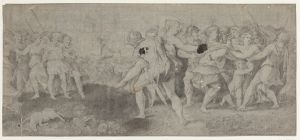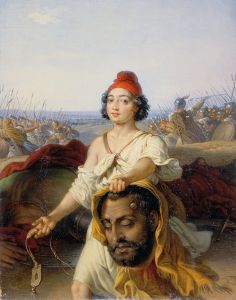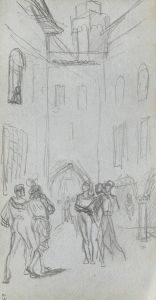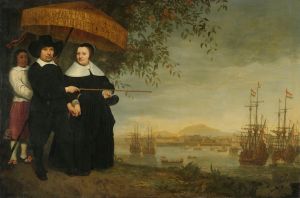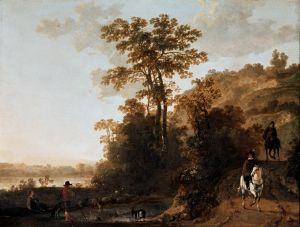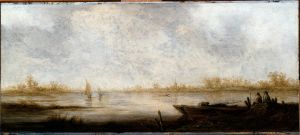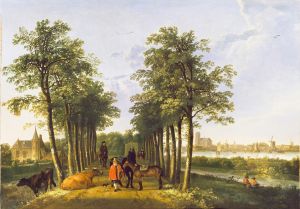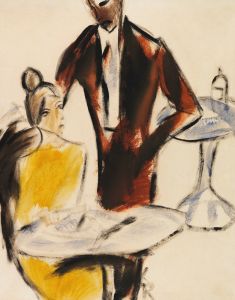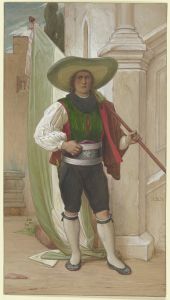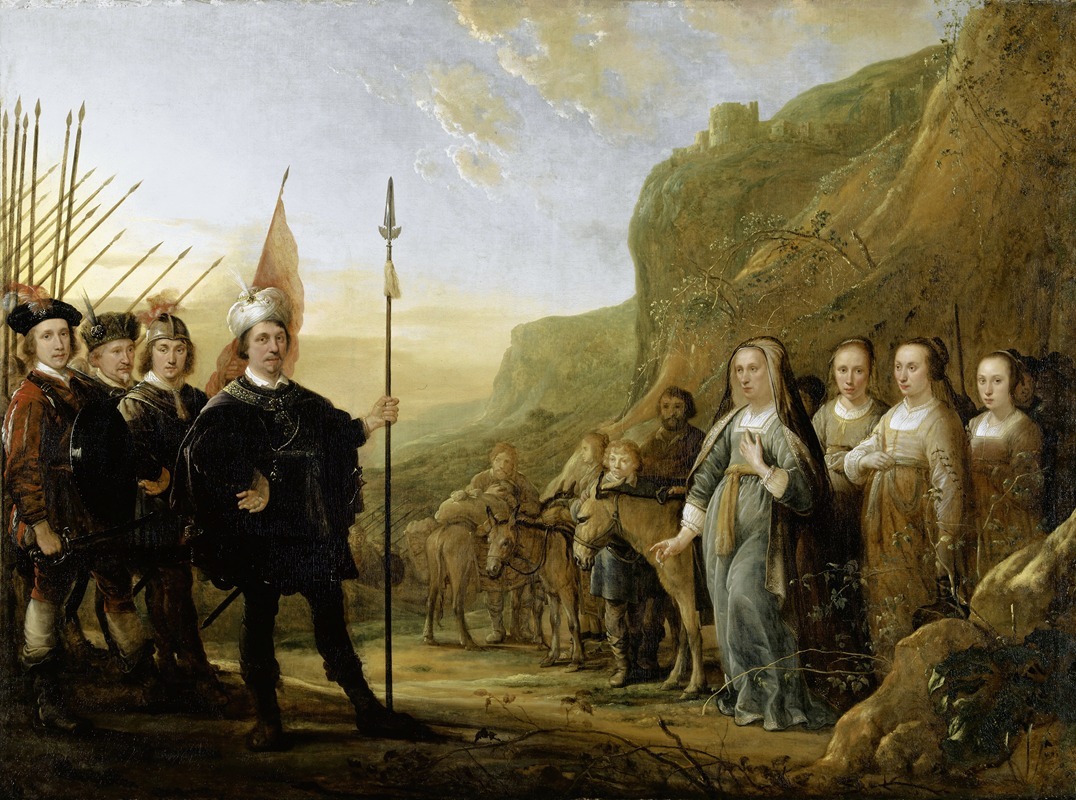
The Encounter of David and Abigail. Portrait of the family of Lowijs Jacobsz. Molenschot and his wife Janneken Jansdr. Rokus
A hand-painted replica of Aelbert Cuyp’s masterpiece The Encounter of David and Abigail. Portrait of the family of Lowijs Jacobsz. Molenschot and his wife Janneken Jansdr. Rokus, meticulously crafted by professional artists to capture the true essence of the original. Each piece is created with museum-quality canvas and rare mineral pigments, carefully painted by experienced artists with delicate brushstrokes and rich, layered colors to perfectly recreate the texture of the original artwork. Unlike machine-printed reproductions, this hand-painted version brings the painting to life, infused with the artist’s emotions and skill in every stroke. Whether for personal collection or home decoration, it instantly elevates the artistic atmosphere of any space.
Aelbert Cuyp, a prominent Dutch landscape painter of the 17th century, is renowned for his masterful ability to capture the serene beauty of the Dutch countryside. One of his lesser-known works, "The Encounter of David and Abigail. Portrait of the family of Lowijs Jacobsz. Molenschot and his wife Janneken Jansdr. Rokus," is an intriguing piece that combines biblical narrative with portraiture, a somewhat unusual approach for Cuyp, who is primarily celebrated for his landscapes.
This painting, created during the Dutch Golden Age, reflects the era's artistic trends, where biblical themes were often intertwined with contemporary life. The work depicts the biblical story of David and Abigail, a narrative from the First Book of Samuel in the Old Testament. In the story, Abigail, the wife of Nabal, intervenes to prevent David from taking vengeance on her household. She brings gifts and pleads for peace, an act that eventually leads to her becoming David's wife after Nabal's death. This tale of wisdom and diplomacy is captured in Cuyp's painting, which is characterized by its warm color palette and soft lighting, typical of Cuyp's style.
In addition to the biblical scene, the painting serves as a portrait of the family of Lowijs Jacobsz. Molenschot and his wife Janneken Jansdr. Rokus. This dual purpose of the painting reflects a common practice of the time, where patrons would commission works that not only depicted religious or historical scenes but also included their likenesses. This allowed patrons to associate themselves with the virtues and narratives depicted in the artwork.
Cuyp's ability to blend these elements showcases his versatility as an artist. While he is primarily known for his landscapes, this work demonstrates his skill in portraiture and narrative composition. The figures in the painting are rendered with attention to detail, capturing the attire and demeanor of the period. The inclusion of the Molenschot family within the biblical scene suggests a personal connection or aspiration to the virtues represented by Abigail's story.
The painting is also notable for its composition and use of light, which are hallmarks of Cuyp's work. The soft, golden light bathes the scene, creating a tranquil and harmonious atmosphere. This effect not only enhances the narrative but also highlights the figures, drawing the viewer's attention to the interaction between David and Abigail, as well as the presence of the Molenschot family.
While specific details about the commission of this painting or its provenance may not be extensively documented, it remains an important example of Cuyp's work that illustrates the intersection of personal and biblical narratives in art. The painting is a testament to the cultural and artistic milieu of the Dutch Golden Age, where art served both as a reflection of personal identity and as a medium for storytelling.
In summary, "The Encounter of David and Abigail. Portrait of the family of Lowijs Jacobsz. Molenschot and his wife Janneken Jansdr. Rokus" is a fascinating work by Aelbert Cuyp that exemplifies the blending of biblical storytelling with personal portraiture. Through his masterful use of light and composition, Cuyp creates a piece that is both a narrative and a personal testament, capturing the essence of the era's artistic endeavors.





